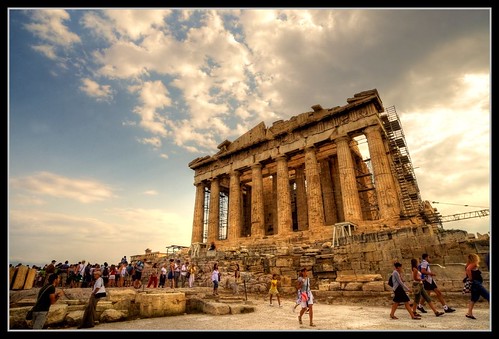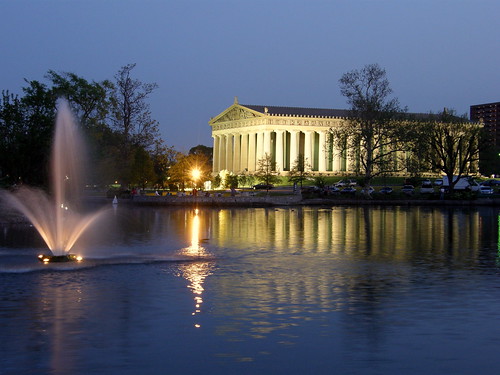Athens was the learning centre of what was one of the greatest empirical cultures in history – the Ancient Greeks. Building the foundations of civilisation, the Greeks progressed education, politics, sports, science, arts and philosophy. Spawning the concept of democracy, and influencing design and architecture for centuries to come, Athens served as the template for society.
 Nashville is the capital of the American state of Tennessee, has a prosperous port and numerous high rise skyscrapers, and lays claim to being the home of country music. A city which has a thriving commercial heart, boasting enough neon signs to make Las Vegas bat an eyelid!
Nashville is the capital of the American state of Tennessee, has a prosperous port and numerous high rise skyscrapers, and lays claim to being the home of country music. A city which has a thriving commercial heart, boasting enough neon signs to make Las Vegas bat an eyelid!
So what does Athens, the ancient city which kickstarted civilisation as we know it, have in common with Nashville, a city which was only founded a couple of centuries ago?
The answer? The Parthenon.
The Parthenon is one of the ancient gems of the architecture world – it’s a relic which is instantly recognisable around the world, and is certainly iconic of Ancient Greece. The Parthenon essentially is the example of classical Greek architecture. When looking at the beauty in the design of this ancient building, one can examine and marvel at the craftmanship of the ancient Athenians.
And yet, Nashville has a replica of the Parthenon which stands proudly in Centennial Park. Except, theirs isn’t in ruins.
A full scale replica was built in 1897 as part of a World’s Fair event, as were other ancient wonders. Only the Parthenon was retained though, leading to the city’s reputation as being the “Athens of the South” – a reference to the city having 24 post-secondary educational establishments, drawing similarities to Plato’s academies in Athens.
 It’s worth noting perhaps, that the “new Parthenon” in Nashville, has been modernised to allow disability access to bring it up to code with requirements of public buildings in America. We can probably assume that was something Pericles didn’t factor into the original design.
It’s worth noting perhaps, that the “new Parthenon” in Nashville, has been modernised to allow disability access to bring it up to code with requirements of public buildings in America. We can probably assume that was something Pericles didn’t factor into the original design.
But it is rather odd to have a copy of the Greek temple sitting amidst the middle of an American city. It seems too fresh and pristine in an age when we view such a structure in our mind to be worn and in ruin. In a way, it’s unremarkable – it comes across simply as just another classically themed building – but this is the Parthenon as it would’ve stood back in its day!A structure which should be astounding, yet we’d much rather see it in ruins.
Much of America’s architecture has relied upon copying, although admittedly it rarely is a direct and blatant copy as the Parthenon. It’d be unfair to pick on just Nashville – a lot of Andrea Palladio’s designs were replicated Stateside too. The original premise for keeping the Parthenon replica was to promote Nashville in the same light and bring about the same sort of popularity as the city of Athens. And in a sense, it has achieved it, developing the city with that reputation of being the “Athens of the South”.
But nevertheless, I can’t help but approach the copy with a sneer about myself, knowing it can never beat the original.